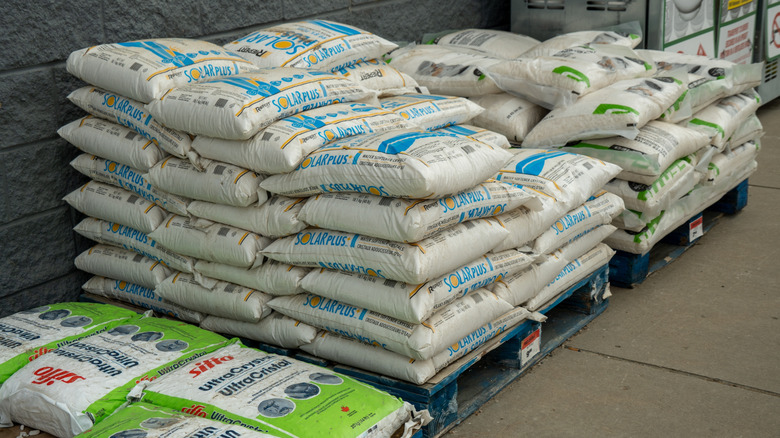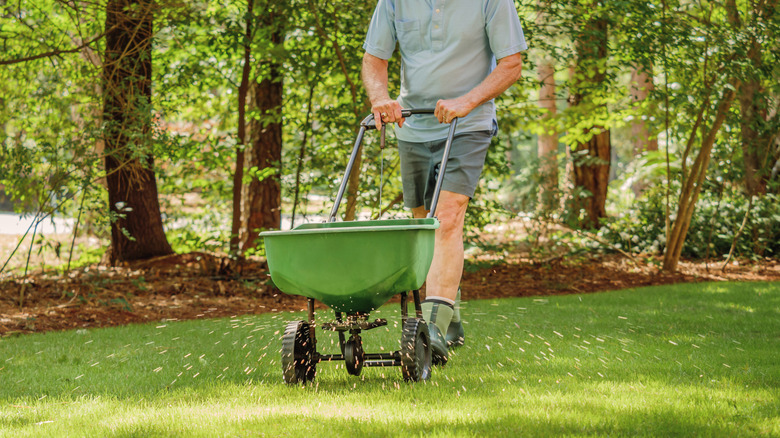Here's What Numbers On Fertilizer Really Mean
We may receive a commission on purchases made from links.
Ever had a quick run to the home improvement store to pick up fertilizer turn into an hour-long quest to decipher the confusing three number combinations on the bag? You're not alone. The numbers on the lawn fertilizer bag can feel confusing at best and completely random at worst. But the truth is these mysterious numbers are key to helping you decide which fertilizer is best for your lawn. How? By telling you how much nitrogen, phosphorus, and potassium respectively is in that fertilizer mix. To put it another way, if a bag says 10-6-4, it's made up of 10% nitrogen, 6% phosphorus, and 4% potassium.
Also known as "N-P-K", these minerals are the principal nutrients for your lawn. First up: nitrogen. Thanks to its ability to generate chlorophyll, nitrogen is key for rich, green lawns. Up next is phosphorus. This mineral helps plants create powerful roots, enabling them to grow stronger and more effectively. The final number represents potassium, or potash, which keeps the plant healthy. Potassium is so important in lawn fertilizer because it acts like an immunity boost, helping your lawn handle stressors, like drought, freezing temperatures, or potential diseases.
Does it really matter what fertilizer mix you use? Short answer: yes. Lawns differ based on grass variety, location, soil type, season, and more. Making sure you're feeding it properly is key to a lush green lawn in all seasons.
How to know which fertilizer numbers are right for your lawn
Before you head to the local nursery, there's one essential step to do first: test your soil. These results will tell you what minerals your soil needs to grow and maintain your lawn, and therefore, the right fertilizer blend. There are two ways to test your soil: with a DIY kit, like Luster Leaf's Rapitest Soil Test Kit or through your county extension office, generally connected to your state's university system. The second option is more accurate, but it can take around four weeks to get the results back.
Once you get your soil test results, look to see which N-P-K nutrient is most deficient. Look for a fertilizer with the highest number in that nutrient. For example, if your soil is nitrogen-deficient — one of the most common problems in yards — pick a blend with a high first number.
There are two more factors to keep in mind before picking up a fertilizer: your lawn's age and the season. Newer lawns will need more phosphorus than established ones to build strong roots, so find a mix where the middle number is near or equal to nitrogen's. Finally, consider what season you're in. Look for a higher phosphorus value in your fall fertilizer for optimal results and switch to a blend with more potassium right before winter for increased cold resistance. Come spring, use a blend with more nitrogen to help growth, and to combat summer's dry season, use more potassium.

